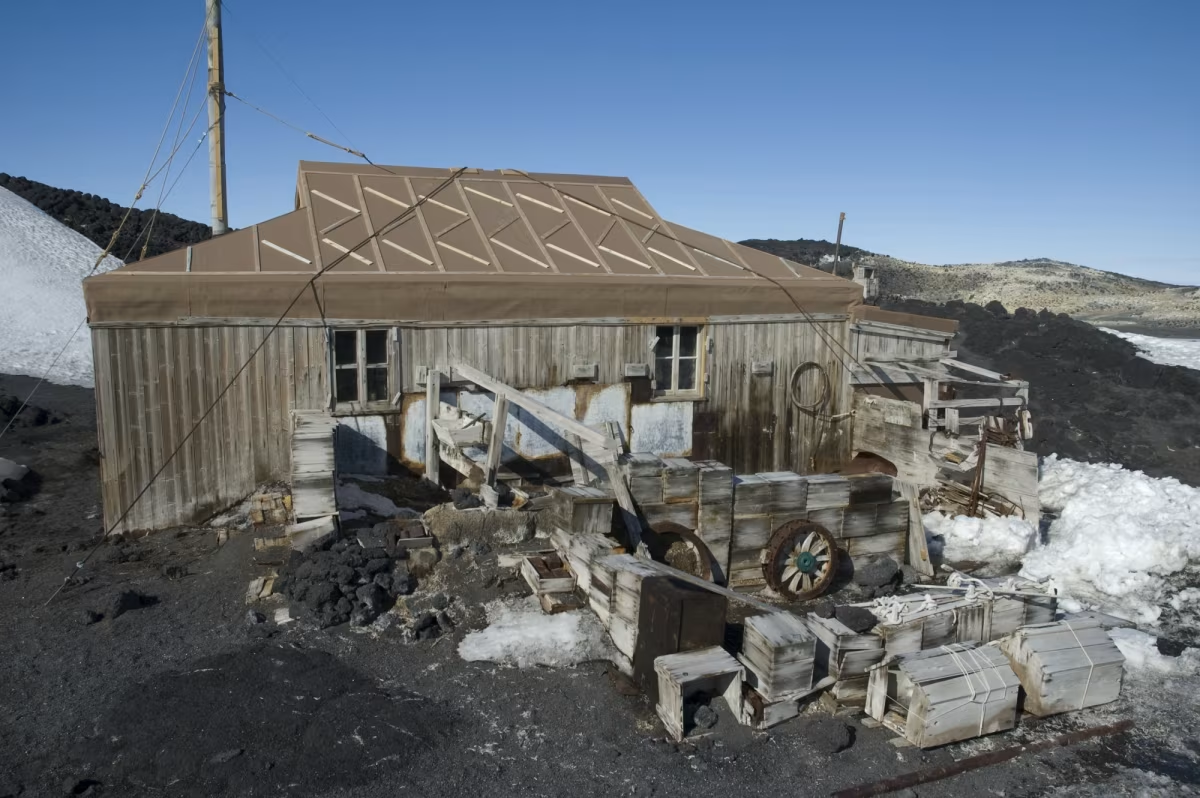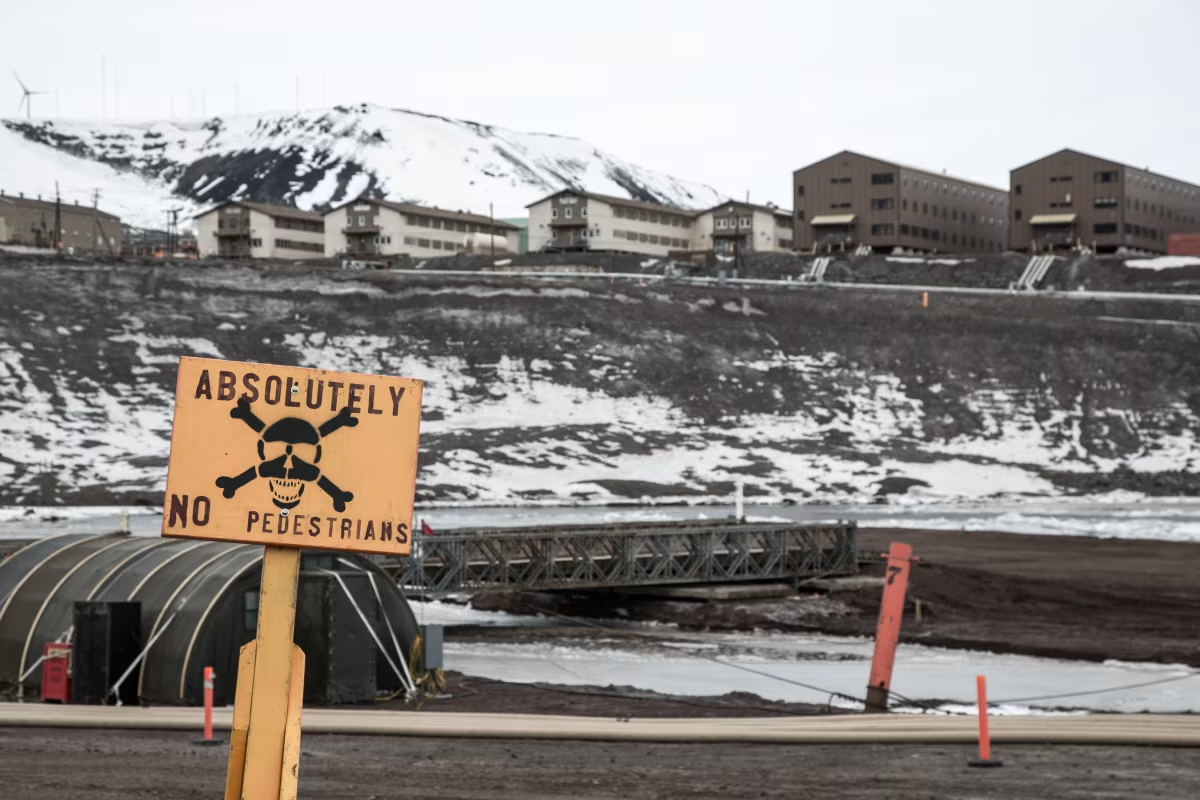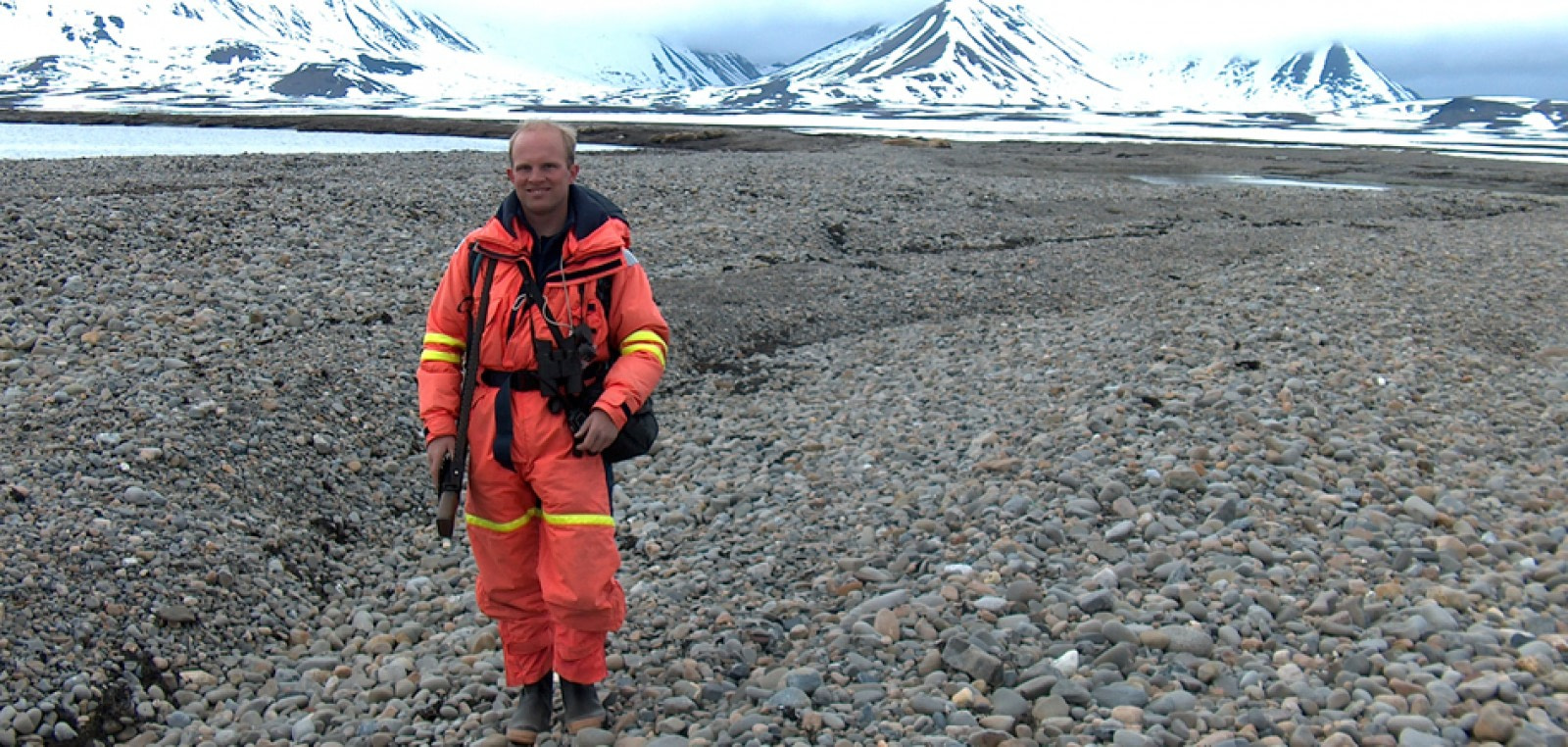Antarctica is remote. Most people never have a chance to get there anyway, and the relatively few ones who make it to the Antarctic Peninsula, possibly including the sub-antarctic gemstone of South Georgia, can surely consider themselves blessed. And the Ross Sea? Compared to that, the Antarctic Peninsula feels like the park that is a 5 minutes walk from your door. Well, almost … Questions naturally popped up from curious friends and envious colleagues:
- Would it be worth to spend so many days crossing potentially rough seas?
- Would the Ross Sea really provide a different experience from what you would see in the Peninsula?
In retrospective, the short answer is: yes, it did. Two days in the Peninsula whetted the appetite for whatever was waiting for us then.
Peter I Island
Of course it is fun to set foot on an island that had been stepped on by less than 1000 people since its discovery. Using helicopters for this purpose certainly didn’t hurt. The onward journey from there and particularly into the Ross Sea proper provided a little – homeopathic dosed, truth to be said – taste of what the expeditions in the heroic age had to face when they set course for the Bay of Whales or McMurdo Sound.
We are talking about a few days, peppered by the odd Zodiac cruise or helicopter flight-seeing next to abundant wildlife sightings (including the elusive Ross Seal!) and lectures, not about weeks and months that they needed to push through the ice in the old days. Iron men on wooden ships, indeed! We were happy to be modern travelers, people like you and me and not of steel, making our way successfully through the ice within a couple of days. But to get a taste of the timelessness of the old expedition is a great thing in itself.
What did Sir Ernest call his camp on the ice of the Weddell Sea? Camp Patience. An Antarctic Odyssey is not for the quick visitor.

Ross Sea
Advanced Antarctica! 5900 miles from Argentina to New Zealand. So what comes after the days at sea and in the ice? It is very simple: stuff that you won’t find anywhere else in the world. That’s what makes it so special.
Even for someone with more than 15 years of intense polar travels under his belts, including more than 70 crossings of the Drake Passage: Mount Erebus, a Ross Seal, the Dry Valleys and of course those famous huts are simply Ross Sea things. You won’t see them elsewhere.
Is an old hut so special? Well, I guess if you have managed to find your way on the internet to read these lines you know what I mean anyway. Some of us just grew up reading the great adventures of Scott, Shackleton and their likes. Starting with shortened versions for young people and then working your way up to scarce and expensive first editions … but that’s another story.
Explorer huts
Anyway, I’ll never forget the moment I first entered Scott’s hut at Cape Evans. The hut from which he set out to reach the South Pole, but to which he would never return. Maybe it was just a lucky case of right place, right time, when our boss Greg Mortimer, veteran of countless expeditions to Antarctica and the highest mountains of this planet, opened the door but then turned around to me to say “you go first”. What a moment it was to step through the entrance area and into this large room that had once housed Scott’s expedition, for so many months, more than a century ago now!
But still, it looks as if they had left just yesterday. Kitchen area on your right hand side as you enter. Tins still in the cupboards, cups, plates and cooking pots, all there, seemingly ready for use. Reindeer-skin sleeping bags still on the bunks. Moments of religious intensity, while 30 knots of wind were howling around the wooden corners outside. A day later, Shackleton’s “Nimrod” hut at Cape Royds provided a very similar experience. We guides almost got marooned on the first attempt because the wind started to push ice into the bay, but a couple of hours later we all made it safely to and into the old hut and to the nearby Adélie penguin colony, the southernmost of its kind anywhere on Earth.

Dry Valleys
History is a great thing, but of course Antarctic scenery is still something else. Our first taste of real Ross Sea scenery was from the helicopters, a couple of days earlier, near Coulman Island on the way down south. But now we wanted to step onto the continent proper. They say it is the coldest, driest, windiest (and most expensive …) continent on Earth. So we wanted to get to a place where you could get a taste of this. As a result, we went into the Dry Valleys. You won’t get anywhere near them without helicopters, the pilots did a great job that day!
Moving about there is very restricted (as almost everywhere), and the only place where you are allowed to put your boots on the ground is far up from the coast (which was completely frozen up anyway), deep in Taylor Valley, near Canada Glaciers. A vertical ice cliff far from the coast! That’s something I had never seen before, not in Spitsbergen, not in Greenland, not in the Antarctic Peninsula. But the Dry Valleys are not from this world. Completely devoid of any vegetation.
After a few steps, you realize that even the seemingly lifeless polar deserts of high-arctic northeastern Spitsbergen are almost a tropical rain forest compared to this, which is an Eldorado for geologists and other aficionados of stripped-down-to-the-bones-landscapes. While you stand near one of these dried-out seal mummies that have been there for hundreds and thousands of years after the poor beast had lost orientation, you realize that it may be millions of years ago that the place has seen some real rain. Just not of this world as we know it.
McMurdo Base
Leaving the western part of McMurdo Sound behind, where the open water areas were already forming dense floes of pancake-ice, we headed for Ross Island again and the furthest south position that you will get on any ship-based trip in the world. Following the fast ice edge, we saw dozens of orcas and some Emperor penguins. Unfortunately, large chunks of ice kept breaking off from the ice edge, so we didn not manage to let everybody go for a walk on the ice for this time.
McMurdo Base is another not-from-this-world-place, although obviously strongly influenced by the presence of what they call civilisation. The view from nearby Observation Hill across the fast ice of innermost McMurdo Sound, with its appearingly seamless transition into the Ross Ice Shelf, is worth it all. You stand next to the memorial cross which they put up for Scott, Bowers, Wilson, Evans and Oates and you can actually the place where the last three of them died, just 200 km further south.

Ross Ice Shelf
Talking about the Ross Ice Shelf. Many will consider this a „must-see“ on a Ross Sea trip. One early and very cold morning found our good ship, mv Ortelius, slowly following the famous „great ice barrier“ eastwards. Cape Crozier, the place of „The worst journey in the world“, a times classic of Antarctic literature, lay already behind us. Ahead of us – a taste of infinity. The endless ice cliff of the Ross Ice Shelf, stretching far beyond the visible horizon, disappearing in the early morning colours of the eastern sky.
Some warm colours, but optically uplifted above the appearent horizon by a mirage, an effect caused by cold bottom layer of air, something not uncommon in polar latitudes. Flying icebergs! Honestly, after these rather busy days we were all more than happy to have a day off once we turned the bow northwards again. The first day at sea after leaving the Ross Ice Shelf behind saw a very quiet m/v Ortelius, before we then gathered again for the usual set of lectures – bets were being placed these lecturers would be able to keep it going like this until the last day? And yes, they did …
Macquarie Island
And I bet most of us on board didn’t even know the tiny little Scott Island exists before it almost popped up on the radar screen and then out there. A small, desolate rock in the middle of a wild sea. Not the slightest thought of going ashore, but amazing to see something solid amidst hundreds of miles of open ocean.
The next piece of dry ground was to be Macquarie Island, which is actually a piece of ocean floor, or actually even oceanic crust, pushed up above sea level by tectonic forces rather than being a volcanic feature as most other remote oceanic islands. Macquarie Island is something unique, geologically speaking. This even gained the island the UNESCO world heritage status, it is there for the rocks and not for the wildlife. Which is amazing, because out of those who manage to get there, most are more likely be be fascinated by the wildlife, while the rocks just set the stage.
Even a geologist/geographer as the present author can understand this, because describing the wildlife as „stunning“ doesn’t seem to describe it aptly. That’s a term they use almost anywhere these days. But on Macquarie, it is true in the original sense of the world. It is a little sub-antarctic heaven. Large elephant seals playfully beating their mighty bodies against each other. Albatrosses elegantly gliding over green slopes. Skuas less playfully fighting over a penguin carcass.
Oh, yes, penguins! They are everywhere. The King penguin seems to be as omnipresent as on South Georgia, although it is a special kind within the „King penguin complex“, as our expert had told us. With the Royal penguin, it is more obvious that they are something special. This species can actually only be seen on Macquarie Island, nowhere else. They have this funny „haircut“ and their eyes are of a wonderful, ruby-like colour.
The crew and scientists from the Australian station were very welcoming and friendly, the presences of some of them during our afternoon landing at Sandy Bay was mainly for legal reasons but turned out to be very pleasant company and an excellent source for local information for anyone who wanted to have a chat with those guys.

Advanced Antarctica coming to an end
It is amazing how quickly 32 days can be a matter of the past. Some passengers had actually decided to stay on board for the return journey, back into the Ross Sea and finally to Argentina! Among us in the expedition team, it was an easy farewell: „see you all next year, same place, same time!“ All of us had dozens of trips to the Antarctic Peninsula behind them, but we felt clearly that we wanted to get more of the wonders of the Ross Sea. You will just not find all these wonderful places, their scenery, history and wildlife, anywhere else in the world.
By Rolf Stange for Oceanwide Expeditions

